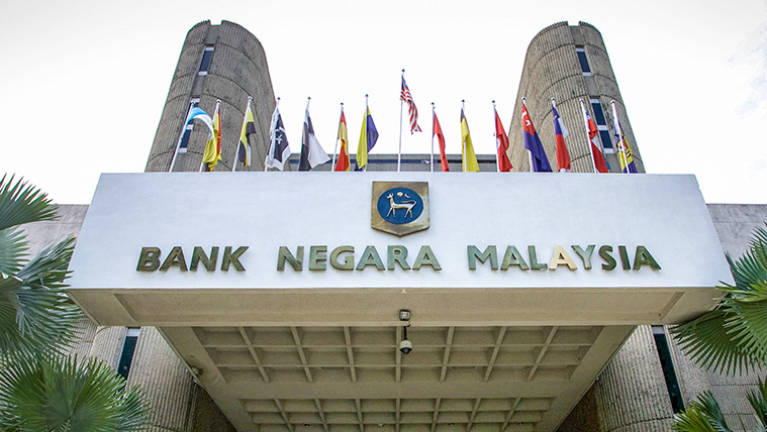PETALING JAYA: Bank Negara Malaysia (BNM) cut the Overnight Policy Rate (OPR) by 25 basis points to 3% from 3.25% at its Monetary Policy Committee (MPC) meeting today due to downside risk to economic growth on the back of market headwinds.
This is the first revision to the OPR since January 2018 and the first rate cut since July 2016.
On the currency market, the ringgit weakened slightly by 0.02% to 4.1485 against US dollar as at 5pm today.
“The ceiling and floor rates of the corridor for the OPR are correspondingly reduced to 3.25% and 2.75% respectively,” the central bank said in a statement today.
BNM said latest developments in Malaysia point towards moderate economic activity in the first quarter of 2019. “Looking ahead, slowing global demand conditions and subdued growth of key trading partners will continue to weigh on the external sector.”
While the baseline projection is for the Malaysian economy to grow within the projected range of 4.3-4.8%, BNM said there are downside risks to growth from heightened uncertainties in the global and domestic environment, trade tensions and extended weakness in commodity-related sectors.
However, stable labour market conditions and capacity expansion in key sectors will continue to drive household and capital spending.
BNM said while domestic monetary and financial conditions remain supportive of economic growth, there are some signs of tightening of financial conditions.
“The adjustment to the OPR is therefore intended to preserve the degree of monetary accommodativeness. This is consistent with the monetary policy stance of supporting a steady growth path amid price stability. The MPC will continue to monitor and assess the balance of risks surrounding the outlook for domestic growth and inflation.”
In the immediate term, inflation is expected to remain low mainly due to policy measures. These include the price ceiling on domestic retail fuel prices until mid-2019 and the impact of the changes in consumption tax policy on headline inflation.
“For 2019 as a whole, average headline inflation is expected to be broadly stable compared to 2018. The trajectory of headline inflation will continue to be dependent on global oil prices. Underlying inflation is expected to remain stable, supported by the continued expansion in economic activity and in the absence of strong demand pressures.”
On the external front, while growth outcomes for several major economies were better than expected during the first quarter, BNM said, underlying economic conditions continue to suggest moderation ahead.
“Considerable downside risks to global growth remain, stemming from unresolved trade tensions and prolonged country-specific weaknesses in the major economies, further dampening global trade and investment activities. Although the tightening in global financial conditions has eased somewhat, heightened policy uncertainties could lead to sharp financial market adjustments, further weighing on the overall outlook.”









